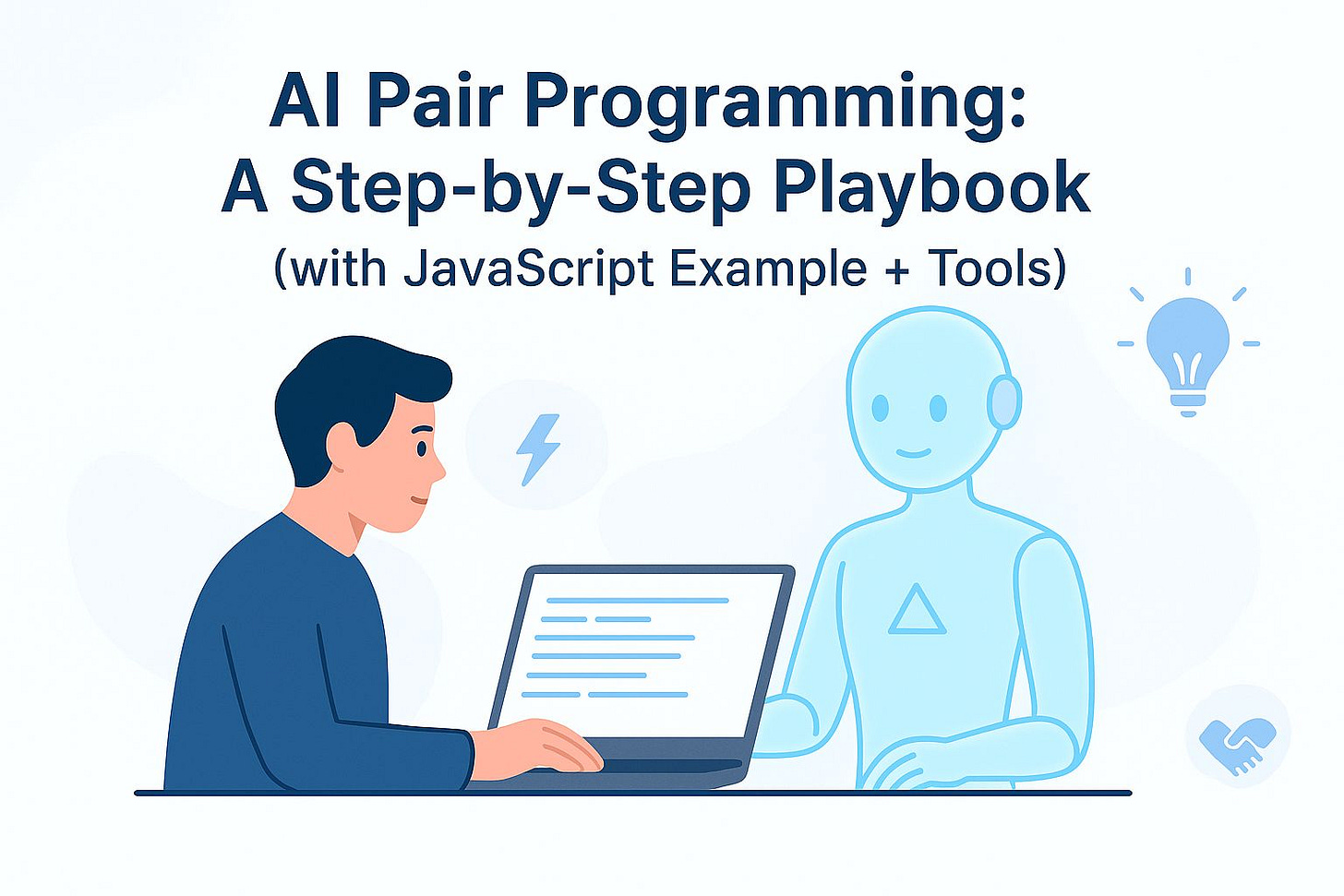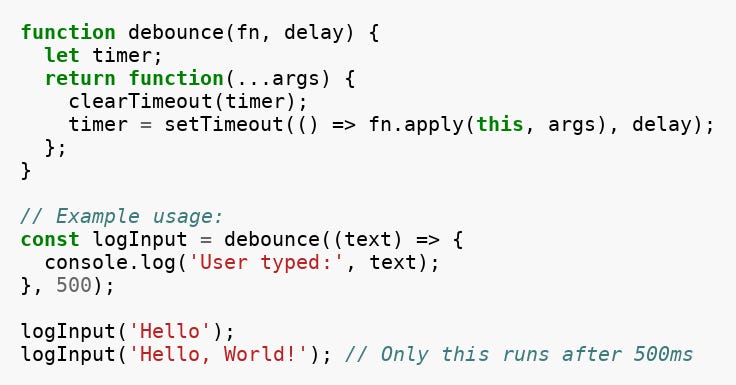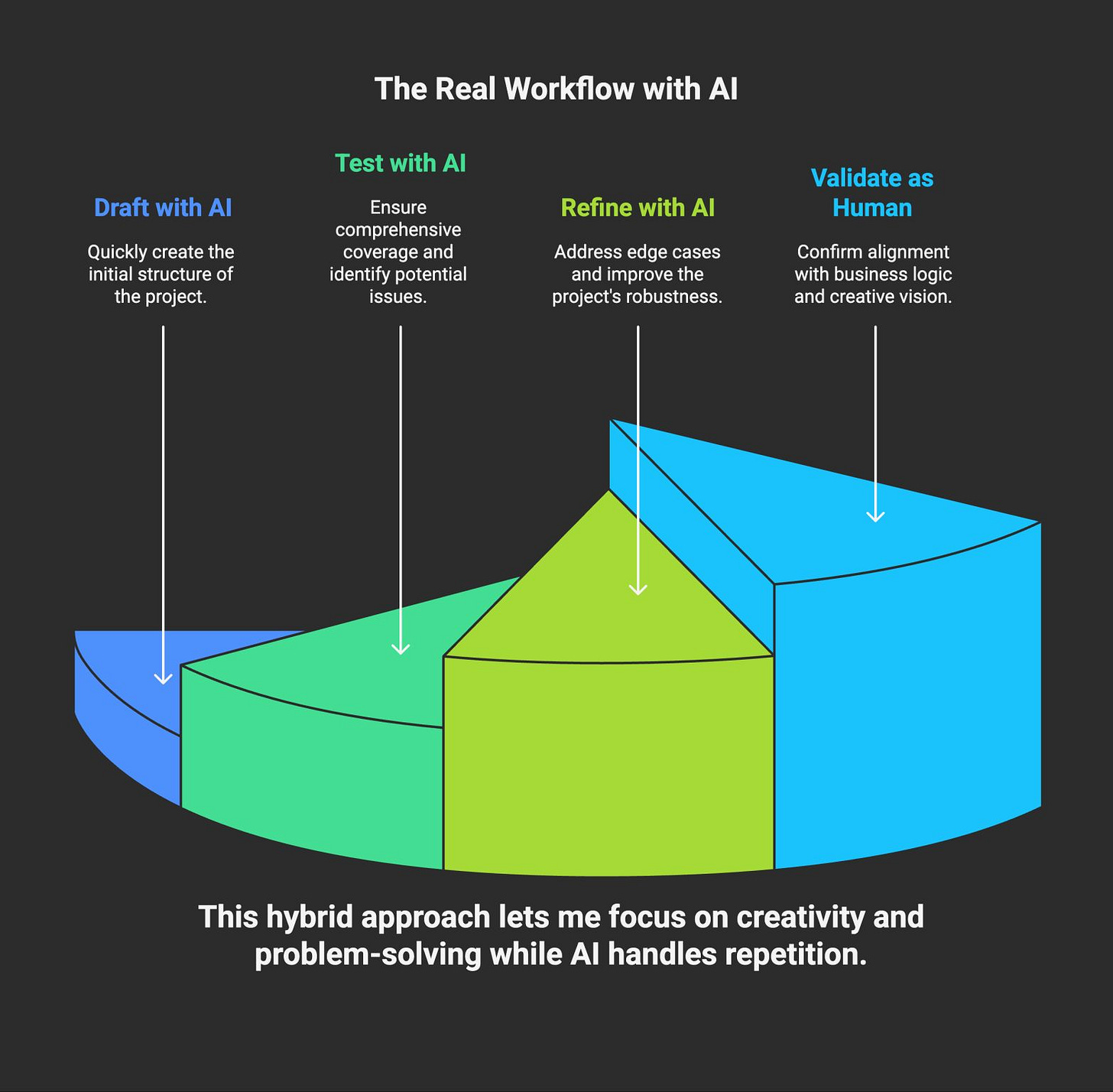AI Pair Programming: A Step‑by‑Step Playbook
How to collaborate with GitHub Copilot, Cursor, and ChatGPT to build better code faster
Pair programming has long been a favourite technique in agile teams. Traditionally, two developers share one keyboard and screen – a “driver” writes code while a “navigator” reviews and guides. Roles swap frequently to keep both minds engaged and to catch mistakes early. This collaboration helps share knowledge, improve design and build team cohesion.
Artificial intelligence has added a new twist. Instead of a human navigator, an AI assistant such as GitHub Copilot can provide real‑time code suggestions and documentation, is always available and adapts to your style. Other tools like Cursor IDE offer AI‑first code editing and refactoring, and ChatGPT provides conversational explanations and brainstorming. Used correctly, these assistants can accelerate learning and feature delivery.
This playbook turns a short LinkedIn post into a full blog. It walks through a simple example — building a debounce function in JavaScript — while explaining how to pair program with AI. You’ll learn how to choose the right tool, define your problem clearly, generate code, write tests, review improvements, and document what you’ve learned.
What is a Debounce Function?
Before diving into AI tools, let’s clarify the problem. In web applications, user events like keypresses or mouse movements can fire rapidly. If you react to every event, your application can become sluggish. Debouncing means discarding operations that occur too close together and consolidating them into a single invocation. For example, when responding to text input, it’s better to wait until the user stops typing before triggering a search or API call. This delay ensures responsive user interfaces and reduces unnecessary computation.
Step 1: Pick Your AI Partner
Your choice of AI assistant influences how you collaborate. Here are three popular options:
GitHub Copilot – A plugin for editors like VS Code that suggests code completions as you type. It learns from billions of code examples and adapts to your conventions. Copilot is ideal for generating boilerplate, unit tests and documentation quickly, especially when you want to stay within your IDE.
Cursor IDE – An AI‑first editor that helps with refactoring and deeper context. It can explain complex code, suggest improvements and quickly integrate third‑party libraries. Cursor feels more like a co‑driver that you can ask to restructure your work.
ChatGPT (with the MCP server for IDE integration) – A conversational assistant that shines when you need high‑level explanations, brainstorming or debugging help. You can ask ChatGPT questions like “Why doesn’t my debounce function work with zero delay?” and get tailored suggestions.
There’s no single “best” assistant. Start by enabling one of these tools in your editor and try them on simple tasks. The key is to remain the driver — you decide which suggestions to accept or discard.
Step 2: Define the Problem Together
Clear communication is essential in pair programming — even with AI. Describe the task in plain language before you code. For our example:
“Write a JavaScript debounce function that delays execution until the user stops typing.”
This prompt specifies the language (JavaScript) and the behaviour we expect (wait until typing stops). A well‑defined goal helps the AI understand your intent and reduces the need for rework.
Step 3: Generate the Initial Draft
Once you’ve described the problem, ask your AI assistant to draft a solution. Here’s the implementation Copilot produced for me:
This function creates a closure that tracks the timer. Each call clears any pending timeout and resets it. When the user stops typing (no new calls within the delay period), the original function is invoked. As a result, only the last input triggers the action. In our example usage, calling logInput("Hello") followed by logInput("Hello, World!") ensures that only the second call runs after 500 milliseconds.
The code is clean and production‑ready for many cases. But don’t stop here — AI code should be treated as a draft, not gospel. You still need to test, review and refine.
Step 4: Ask AI for Tests
Quality code requires tests. Luckily, AI can help here too. Tools like Copilot can generate unit tests based on your function signature and comments. For example, you might ask the assistant: “Write Jest tests to verify that the debounce function delays execution.” It will likely produce a test that calls your function multiple times and checks that it runs only once after the delay.
AI‑generated tests are particularly useful for covering edge cases and saving time. The KodeKloud guide lists test case generation as one of the best scenarios for using Copilot. Remember, though, that tests generated by AI are starting points. You should review them to ensure they cover the behaviours you care about and align with your project’s standards.
Step 5: Review & Refactor Together
At this stage, shift from being a code author to a reviewer. Ask questions such as:
Can this implementation be optimized for performance or readability?
What happens if the delay is zero?
How does it handle being called with different
thiscontexts?
AI can suggest variations — perhaps a version that supports immediate execution on the first call or one that cancels itself. Use your judgment to pick the version that fits your requirements.
Remember to be cautious. The KodeKloud notes recommend verifying security‑critical code, complex business logic and performance‑sensitive sections yourself. AI suggestions may not consider your domain’s specific constraints or legal obligations. Always run benchmarks and security reviews when necessary.
Step 6: Document and Learn
After finalizing your function, ask the AI to help document it. Copilot can generate JSDoc comments or Markdown documentation explaining how to use the function and why debouncing is useful. You can even ask ChatGPT to produce a short tutorial with examples, which is great for sharing with your team.
Finally, reflect on the process. AI pair programming isn’t just about writing code faster; it’s an opportunity to learn. Pay attention to patterns in the AI’s suggestions. Over time, you’ll internalize these idioms and become a more effective developer.
Conclusion: The Human is Still the Driver
AI pair programming can transform your workflow: it offers real‑time suggestions, adapts to your style and provides 24/7 assistance. It excels at repetitive tasks like boilerplate generation, API scaffolding, test case drafting and documentation. Yet the human developer remains essential. You bring creativity, domain knowledge and ethical oversight.
Start with small, low‑risk tasks to build trust in your AI assistant. Treat suggestions as learning opportunities rather than prescriptions. With clear goals, critical evaluation and continuous refinement, AI pair programming can help you ship features faster, maintain higher quality and enjoy coding even more.
Ready to give it a try? Open your IDE, enable an AI assistant, and start by writing your own debounce function. The future of coding is collaborative — and now your partner can be an AI.




